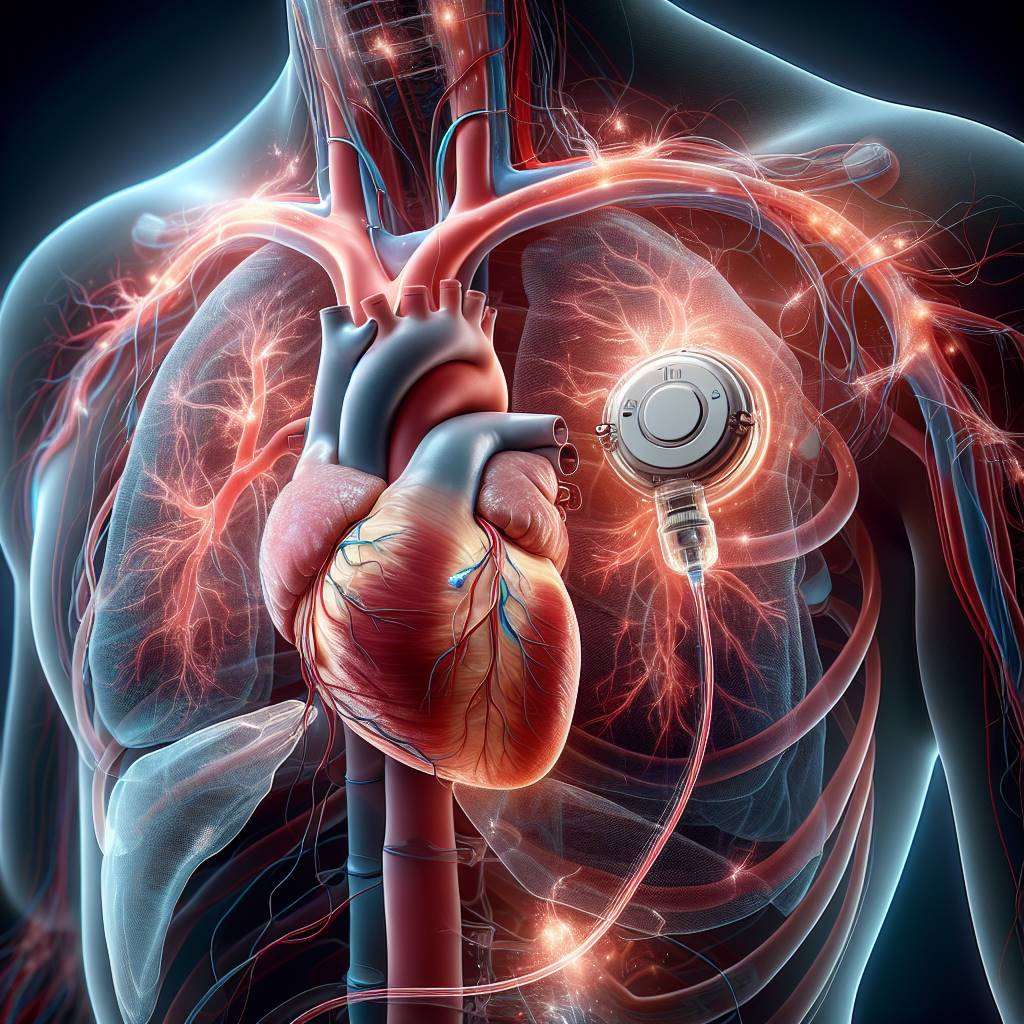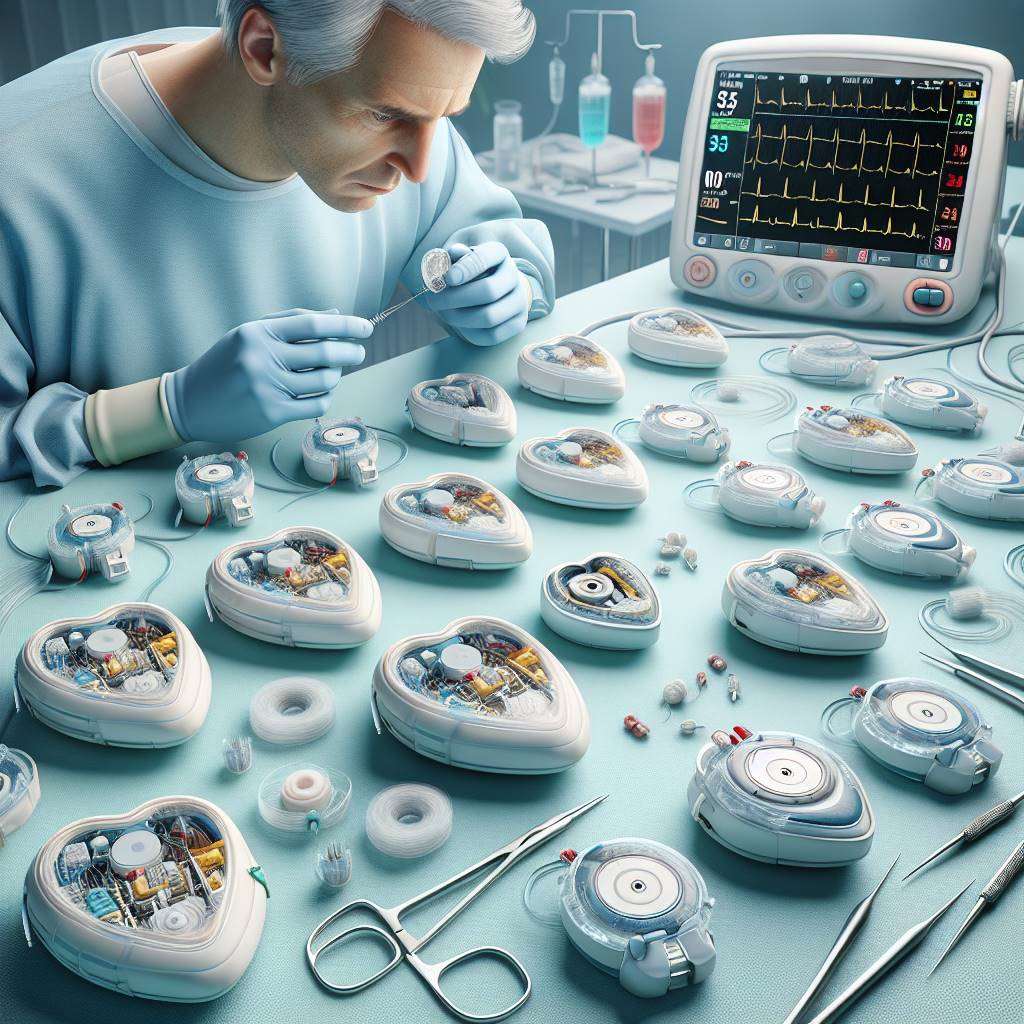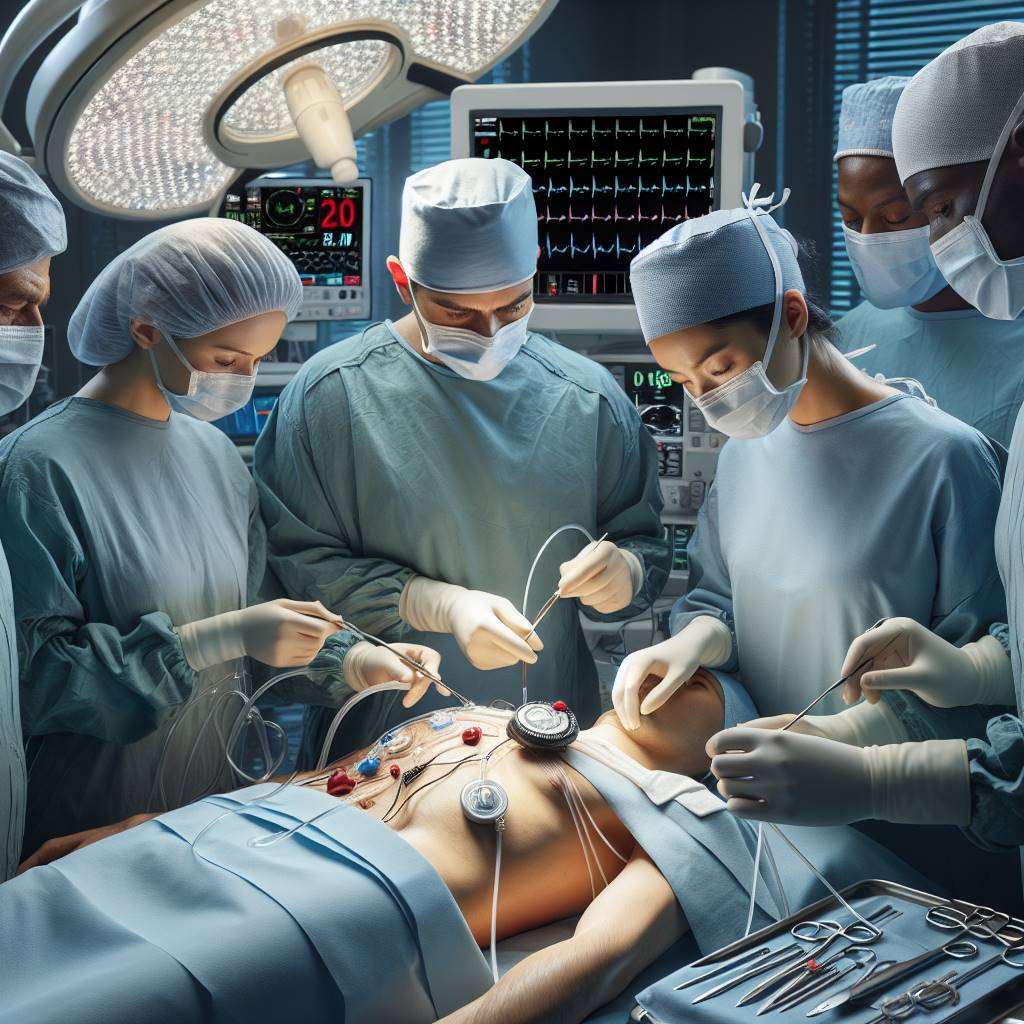Pacemakers are small medical devices designed to regulate abnormal heart rhythms, a condition known as arrhythmia. They are especially beneficial for elderly patients who often face age-related heart issues. By sending electrical impulses to the heart, pacemakers ensure a steady heartbeat, improving overall health and reducing the risk of complications like heart failure or stroke.
For elderly individuals, pacemakers can significantly enhance quality of life by addressing symptoms such as fatigue and dizziness caused by irregular heartbeats. Understanding the benefits and potential concerns of pacemakers is crucial for patients and caregivers to make informed decisions about this life-saving treatment option.
What Are Pacemakers and How Do They Work?
A pacemaker is a small, battery-operated device implanted under the skin, typically near the collarbone. It is connected to the heart via thin wires called leads. The device monitors the heart's electrical activity and sends signals to stimulate the heart when it beats too slowly or irregularly. This ensures a consistent and healthy heart rhythm.
Pacemakers are commonly used to treat conditions like bradycardia (slow heart rate) and heart block, where the electrical signals in the heart are delayed or blocked. Modern pacemakers are highly advanced, with features like rate responsiveness, which adjusts the heart rate based on physical activity levels.
There are different types of pacemakers, including single-chamber, dual-chamber, and biventricular devices. The choice depends on the patient's specific heart condition and overall health. These devices are a cornerstone of cardiac care, especially for elderly patients with chronic heart issues.

Key Benefits of Pacemakers for Elderly Patients
Pacemakers offer numerous benefits for elderly patients, particularly those with cardiac arrhythmias. By maintaining a steady heart rhythm, they help alleviate symptoms such as fatigue, shortness of breath, and fainting spells. This can lead to improved energy levels and a better ability to perform daily activities.
Another significant advantage is the reduction in the risk of severe complications like stroke or sudden cardiac arrest. Pacemakers also enhance blood circulation, ensuring that vital organs receive adequate oxygen and nutrients. This is particularly important for elderly individuals who may already have other health conditions.
Additionally, modern pacemakers are designed to be minimally invasive and long-lasting, requiring only periodic check-ups. This makes them a practical and effective solution for managing chronic heart conditions in older adults.
Signs That an Elderly Person May Need a Pacemaker
Recognizing the signs that an elderly person may need a pacemaker is crucial for timely intervention. Common symptoms include persistent fatigue, dizziness, and episodes of fainting, which may indicate an irregular or slow heart rate. Other warning signs include shortness of breath during mild activities and chest discomfort.
In some cases, elderly patients may experience palpitations or a sensation of skipped heartbeats. These symptoms often point to underlying conditions like bradycardia or heart block. A thorough evaluation by a cardiologist, including an ECG or Holter monitoring, can help confirm the need for a pacemaker.
- Unexplained fatigue or weakness
- Frequent dizziness or fainting spells
- Shortness of breath during routine activities
- Irregular or slow heartbeat
Early detection and treatment can prevent complications and significantly improve the patient's quality of life.
How Pacemakers Improve Quality of Life in Seniors
Pacemakers play a vital role in enhancing the quality of life for seniors by addressing the root cause of their heart rhythm issues. By ensuring a steady and reliable heartbeat, these devices help reduce symptoms like fatigue, dizziness, and breathlessness, enabling elderly patients to lead more active and independent lives.
Improved heart function also means better oxygen delivery to the body, which can enhance cognitive function and overall well-being. Seniors with pacemakers often report increased energy levels and a greater ability to participate in social and physical activities.
Furthermore, modern pacemakers are designed to adapt to the patient's activity levels, providing optimal support during both rest and exercise. This adaptability makes them a highly effective solution for managing chronic heart conditions in older adults.
Potential Risks and Concerns with Pacemakers in Elderly
While pacemakers are generally safe, there are potential risks and concerns, especially for elderly patients. One common issue is the risk of infection at the implantation site, which may require additional treatment. Other complications include bleeding, swelling, or damage to blood vessels during the procedure.
Long-term concerns include device malfunction or battery depletion, which necessitates regular follow-ups and occasional replacements. Some patients may also experience interference from electronic devices, which can temporarily disrupt the pacemaker's function.
| Potential Risk |
Explanation |
| Infection |
Occurs at the implantation site, requiring antibiotics or further intervention. |
| Device Malfunction |
Rare but may require reprogramming or replacement. |
| Battery Depletion |
Requires periodic monitoring and replacement every 5–15 years. |
Despite these risks, the benefits of pacemakers often outweigh the concerns, making them a valuable option for elderly patients with serious heart conditions.
Types of Pacemakers: Choosing the Right Device
Pacemakers are life-saving devices designed to regulate abnormal heart rhythms, especially in elderly patients. There are three main types of pacemakers: single-chamber, dual-chamber, and biventricular pacemakers. Each type is selected based on the patient’s specific heart condition and overall health.
Single-chamber pacemakers are often used for patients with bradycardia, where the heart beats too slowly. Dual-chamber pacemakers help coordinate the timing between the upper and lower chambers of the heart. Biventricular pacemakers, also known as cardiac resynchronization therapy (CRT) devices, are ideal for patients with heart failure and irregular heartbeats.
Choosing the right pacemaker involves a thorough evaluation by a cardiologist, considering factors like the patient’s age, activity level, and the severity of their condition. Modern pacemakers are highly advanced, offering features like wireless monitoring and longer battery life.

How Safe Are Pacemaker Implantation Procedures?
Pacemaker implantation is a relatively safe and minimally invasive procedure, even for elderly patients. The surgery typically takes about 1–2 hours and is performed under local anesthesia. Most patients can return home within a day or two after the procedure.
While complications are rare, some risks include infection, bleeding, or swelling at the implantation site. In rare cases, there may be issues with the pacemaker leads or device malfunction. However, advancements in medical technology have significantly reduced these risks.
To ensure safety, patients should follow their doctor’s advice and attend regular follow-up appointments. These visits allow the cardiologist to monitor the pacemaker’s performance and make any necessary adjustments. Overall, the benefits of a pacemaker far outweigh the risks for most elderly patients.
Recovery and Aftercare Tips for Elderly Pacemaker Patients
Recovery after pacemaker implantation is usually smooth, but proper aftercare is crucial for elderly patients. During the first few weeks, patients should avoid strenuous activities and heavy lifting to allow the incision site to heal properly.
Here are some essential aftercare tips:
- Keep the incision site clean and dry to prevent infection.
- Avoid raising the arm on the side of the pacemaker above shoulder level for a few weeks.
- Attend all follow-up appointments to ensure the pacemaker is functioning correctly.
- Inform healthcare providers about the pacemaker before undergoing any medical procedures.
Patients should also be aware of potential symptoms like dizziness, fatigue, or swelling, which may indicate a problem with the device. With proper care, most elderly patients can resume their normal activities and enjoy an improved quality of life.
Common Myths About Pacemakers in Older Adults
There are several misconceptions about pacemakers, especially when it comes to elderly patients. One common myth is that pacemakers are only for people with severe heart conditions. In reality, they are used to treat a range of issues, including arrhythmias and bradycardia.
Another myth is that pacemakers severely limit physical activity. On the contrary, they often enable patients to lead more active lives by improving their heart function. Some people also believe that pacemakers are prone to frequent malfunctions. However, modern devices are highly reliable and equipped with advanced technology to ensure safety.
It’s important to consult a cardiologist to address any concerns and separate facts from myths. Understanding the truth about pacemakers can help patients and their families make informed decisions about their health.
Pacemaker Lifespan: How Long Do They Last?
The lifespan of a pacemaker depends on several factors, including the type of device, usage, and battery capacity. On average, most pacemakers last between 5 to 15 years. The battery is the primary component that determines the device’s longevity.
When the battery begins to deplete, the pacemaker will not stop suddenly. Instead, it provides ample warning, allowing the doctor to schedule a replacement procedure. This replacement is a straightforward process that involves replacing the generator while keeping the leads intact.
To maximize the lifespan of a pacemaker, patients should attend regular check-ups and follow their doctor’s advice. Modern pacemakers are designed to be durable and efficient, ensuring that elderly patients can benefit from them for many years.
Cost of Pacemaker Surgery in India: What to Expect
The cost of pacemaker surgery in India can vary depending on factors such as the type of pacemaker, hospital location, and the patient's medical condition. On average, the cost ranges from ₹2,50,000 to ₹5,00,000, making it a significant investment for many families.
There are two main types of pacemakers: single-chamber and dual-chamber devices. While single-chamber pacemakers are generally more affordable, dual-chamber devices offer enhanced functionality for patients with complex cardiac conditions. It is essential to discuss the options with your cardiologist to determine the best fit for your needs.
Many hospitals in India offer financial assistance programs or insurance coverage to help manage the expenses. Patients should also consider post-surgery costs, including follow-up visits and device maintenance.

Living with a Pacemaker: Lifestyle Adjustments for Seniors
After receiving a pacemaker, seniors may need to make certain lifestyle adjustments to ensure the device functions optimally. While most patients can resume daily activities, some precautions are necessary to avoid complications.
For instance, patients should avoid prolonged exposure to strong electromagnetic fields, such as those from MRI machines or high-voltage power lines. Additionally, activities like contact sports may need to be limited to prevent damage to the device.
Maintaining a heart-healthy lifestyle is crucial. This includes regular exercise, a balanced diet, and managing conditions like hypertension or diabetes. Patients should also attend regular follow-ups to monitor the pacemaker's performance and battery life.
- Carry a pacemaker ID card at all times.
- Inform healthcare providers about your pacemaker before any medical procedure.
- Avoid placing mobile phones or headphones directly over the device.
When to Consult a Doctor About Pacemaker Issues
It is vital to recognize the signs of potential pacemaker complications and seek medical attention promptly. Common symptoms that may indicate an issue include dizziness, fainting, irregular heartbeats, or persistent fatigue.
Infections at the surgical site, swelling, or redness are also warning signs that require immediate evaluation. Additionally, if you experience a sudden change in your heart rate or feel that the device is not functioning correctly, consult your cardiologist without delay.
Regular follow-ups are essential to ensure the pacemaker is working as intended. During these visits, your doctor will check the device's settings and battery life. Early detection of issues can prevent more severe complications and improve overall outcomes for elderly patients.
Pacemakers and Other Heart Treatments: What to Know
Pacemakers are often used in conjunction with other heart treatments to manage complex cardiac conditions. For example, patients with arrhythmias may benefit from both a pacemaker and medications like beta-blockers or anti-arrhythmic drugs.
In some cases, a pacemaker may be combined with a defibrillator, known as a CRT-D device, to treat severe heart failure. This advanced technology helps synchronize heartbeats and prevent sudden cardiac arrest.
| Treatment |
Purpose |
| Pacemaker |
Regulates slow or irregular heartbeats. |
| Medications |
Manages symptoms like high blood pressure or arrhythmias. |
| CRT-D |
Combines pacing and defibrillation for advanced heart failure. |
Discussing all available options with your healthcare provider is crucial to developing a comprehensive treatment plan tailored to your condition.
Latest Advances in Pacemaker Technology for Elderly Care
Recent advancements in pacemaker technology have significantly improved the quality of life for elderly patients. Modern pacemakers are smaller, more durable, and equipped with advanced features like wireless monitoring and longer battery life.
One notable innovation is the leadless pacemaker, which eliminates the need for traditional leads, reducing the risk of infections and complications. These devices are implanted directly into the heart and are ideal for patients with specific medical conditions.
Additionally, remote monitoring systems now allow doctors to track pacemaker performance in real-time, enabling early detection of issues and reducing the need for frequent hospital visits. These advancements make elderly care more efficient and patient-friendly.
Best Pacemaker Surgery Doctors in India
Two renowned specialists in pacemaker implantation in India are Dr. Balbir Singh, Chairman of Cardiology at Medanta - The Medicity, Gurugram, with over 30 years of experience and expertise in electrophysiology, and Dr. Praveen Chandra, Chairman of Interventional Cardiology at Medanta - The Medicity, Gurugram, with 25+ years of experience and international recognition. Both are highly skilled in advanced cardiac care.
Learn more on best pacemaker implantation surgery doctors in india
Best Pacemaker Surgery Hospitals in India
Leading hospitals for pacemaker implantation in India include Fortis Escorts Heart Institute, New Delhi, known for its multidisciplinary cardiac care and JCI accreditation, and Apollo Hospitals, Chennai, offering state-of-the-art electrophysiology labs and international patient services. Both hospitals are recognized for their high success rates and adherence to global standards.
Find more best pacemaker implantation surgery hospitals in india
Pacemaker Surgery Cost in India
The cost of pacemaker implantation in India typically ranges from INR 2,50,000 to INR 5,00,000 (approximately USD 3,000 to USD 6,000). Factors influencing costs include the type of pacemaker, hospital category, and doctor’s expertise. The average hospital stay is 2-5 days. India offers a significant cost advantage compared to Western countries, with options for insurance or financing.
Learn pacemaker implantation surgery cost in india
Pacemaker Surgery Treatment in India
Pacemaker implantation in India involves the insertion of a small device under the skin to regulate heart rhythms. The procedure is typically performed using minimally invasive techniques under local anesthesia. Advanced technologies like 3D mapping and robotic assistance are available at top hospitals. Recovery usually takes 1-2 weeks, with strict adherence to global medical protocols.
Learn on Pacemaker Surgery Treatment in India
FAQs
What is a pacemaker, and how does it work?
A pacemaker is a small medical device implanted under the skin to regulate abnormal heart rhythms. It sends electrical impulses to the heart to maintain a normal heartbeat.
Who needs a pacemaker?
Patients with conditions like bradycardia (slow heart rate), heart block, or certain types of arrhythmias may require a pacemaker to improve heart function.
Is pacemaker implantation a safe procedure?
Yes, pacemaker implantation is a safe and commonly performed procedure. Complications are rare when conducted by experienced cardiologists in accredited hospitals.
How long does a pacemaker last?
The battery life of a pacemaker typically ranges from 5 to 15 years, depending on the type and usage. Regular follow-ups are essential to monitor its performance.
What precautions should I take after pacemaker implantation?
Avoid heavy lifting, strenuous activities, and close proximity to strong magnetic fields. Follow your doctor’s advice for a safe recovery.
Can I travel with a pacemaker?
Yes, patients with pacemakers can travel. Inform airport security about your device, as it may trigger metal detectors. Carry your pacemaker ID card at all times.
Are there any risks associated with pacemakers?
Risks are minimal but may include infection, device malfunction, or lead displacement. Regular check-ups help mitigate these risks.
How soon can I resume normal activities after implantation?
Most patients can resume light activities within a week and normal activities within 4-6 weeks. Consult your doctor for personalized advice.
What types of pacemakers are available?
There are single-chamber, dual-chamber, and biventricular pacemakers. The choice depends on the patient’s specific heart condition.
Is pacemaker implantation covered by insurance?
Yes, most health insurance plans in India cover pacemaker implantation. Verify with your provider for specific terms and conditions.
Understanding Pacemaker Longevity and Gender-Specific Outcomes
Pacemakers are vital devices that help regulate heart rhythms, but many patients wonder about their longevity. The lifespan of a pacemaker can vary based on several factors, including the type of device and the patient's health. For a comprehensive overview of how long a pacemaker typically lasts and what to consider for replacement planning, check out this insightful article on pacemaker lifespan and replacement planning.
Moreover, recent research has highlighted significant gender differences in pacemaker outcomes. Understanding these disparities can lead to better patient care and tailored treatment approaches. To delve deeper into what the research says about gender differences in pacemaker outcomes, visit this informative blog on gender differences in pacemaker outcomes.
By staying informed about both the longevity of pacemakers and the nuances of gender-specific outcomes, patients can engage in more meaningful discussions with their healthcare providers, ultimately leading to improved heart health management.